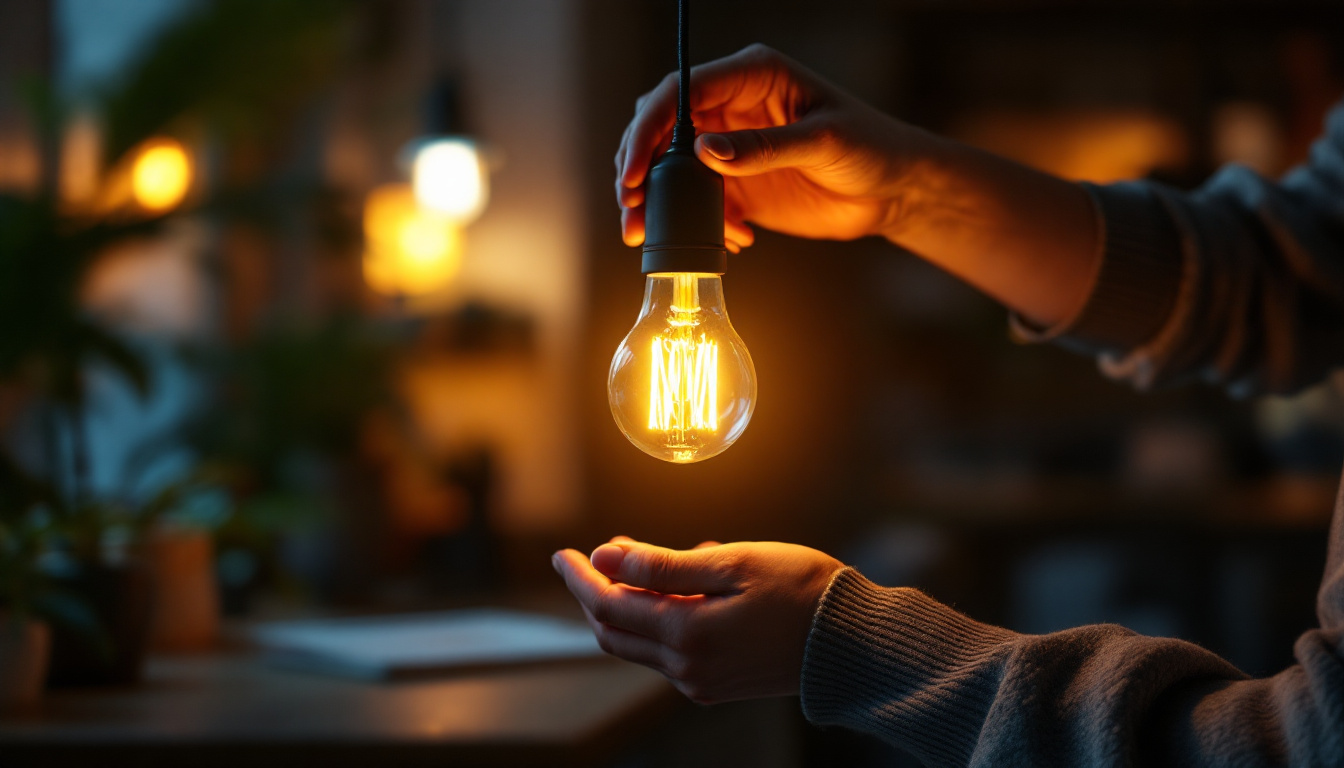
As the demand for sustainable energy solutions continues to rise, large outdoor solar lights have become an increasingly popular choice for both residential and commercial applications. For lighting contractors, understanding how to effectively train a team in the installation and maintenance of these systems is crucial. This article will explore strategies for training your team, ensuring they are equipped with the knowledge and skills necessary to excel in the field of solar lighting.
Before delving into training techniques, it is essential to establish a solid foundation of knowledge regarding solar lighting technology. Solar lights operate by converting sunlight into electricity through photovoltaic cells. This energy is then stored in batteries for use during nighttime or cloudy days. Understanding this fundamental principle is crucial for any team member involved in installation or maintenance.
In addition to the basic operation, it is important to familiarize the team with the various components of solar lighting systems, including solar panels, batteries, LED fixtures, and controllers. Each component plays a vital role in the overall functionality and efficiency of the system, and knowing how they interact can significantly enhance troubleshooting skills. For example, the efficiency of the solar panel can be affected by shading or dirt accumulation, which can lead to decreased performance. Regular maintenance and cleaning of these panels are essential to ensure optimal energy conversion.
Moreover, understanding the role of the controller is paramount. This component regulates the charging and discharging of the battery, ensuring that the lights operate efficiently and prolonging battery life. A well-informed team can identify and address issues related to the controller, such as programming errors or faulty connections, which can prevent system failures and enhance reliability.
There are various types of large outdoor solar lights, each designed for specific applications. From street lights to garden lights, understanding the differences can help your team make informed decisions during installation and maintenance. For instance, street lights typically require higher lumen output and more robust battery systems compared to decorative garden lights. The design and placement of these lights also vary significantly; street lights are often mounted on tall poles to maximize illumination over a broad area, while garden lights are usually lower to the ground, creating a softer ambiance.
Training should also cover the advantages and disadvantages of each type. For example, while solar street lights are cost-effective and environmentally friendly, they may have limitations in areas with prolonged cloudy weather. Familiarizing your team with these nuances will empower them to provide better recommendations to clients. Additionally, understanding the different types of LED fixtures, such as warm white versus cool white, can help in selecting the right aesthetic for a project. Warm white lights tend to create a more inviting atmosphere, while cool white lights can enhance visibility and security, making them suitable for areas like parking lots or pathways.
Furthermore, it is beneficial to explore the emerging trends in solar lighting technology, such as smart solar lights equipped with motion sensors and connectivity features. These advanced systems can adapt to environmental conditions and user needs, providing enhanced functionality and energy savings. Training the team on these innovations will not only broaden their expertise but also position them to meet the evolving demands of clients looking for cutting-edge solutions in solar lighting.
One of the most effective ways to train a team in solar lighting installation is through hands-on experience. Setting up mock installations allows team members to familiarize themselves with tools, components, and installation techniques in a controlled environment. This practical approach not only builds confidence but also enhances problem-solving skills.
During hands-on training sessions, it is beneficial to encourage team members to take on different roles, such as project manager, installer, and technician. This rotational training can provide a comprehensive understanding of the entire process, fostering teamwork and collaboration.
Visual aids play a significant role in enhancing understanding and retention of information. Incorporating diagrams, videos, and infographics into training sessions can help clarify complex concepts related to solar lighting systems. For instance, visual representations of wiring diagrams can simplify the learning process for new team members.
Additionally, creating a library of resources that team members can refer to during installations or maintenance can reinforce learning and provide ongoing support. This could include instructional videos, product manuals, and troubleshooting guides.
Safety should always be a priority during any installation process. Training should include a thorough understanding of safety standards and regulations related to outdoor solar lighting. This includes knowledge of electrical safety, working at heights, and proper handling of tools and equipment.
Incorporating safety training into the curriculum not only protects team members but also ensures compliance with local regulations. Regular safety drills and refreshers can reinforce the importance of safety protocols and keep the team prepared for any situation.
In addition to general safety training, it is crucial to prepare your team for emergency situations. This includes training on how to respond to electrical hazards, equipment malfunctions, or adverse weather conditions. Conducting mock emergency scenarios can help team members practice their response strategies in a safe environment.
Ensuring that all team members are familiar with emergency contact numbers and procedures can further enhance safety during installations. Empowering your team with the knowledge to handle emergencies can significantly reduce risks on the job site.
As lighting contractors, team members often interact with clients during the installation process. Training should include effective communication techniques to ensure that team members can clearly convey technical information to clients. This includes explaining the benefits of solar lighting, addressing concerns, and providing maintenance tips.
Encouraging active listening skills is equally important. Team members should be trained to listen to client feedback, answer questions thoroughly, and adapt their approach based on client needs. This not only enhances customer satisfaction but also builds trust and rapport.
Managing client expectations is a critical aspect of any project. Training should focus on setting realistic timelines, discussing potential challenges, and providing transparent pricing information. By preparing team members to communicate effectively about project scope and limitations, they can help prevent misunderstandings and foster positive client relationships.
Role-playing scenarios can be an effective training tool for practicing these skills. By simulating client interactions, team members can develop their ability to handle various situations, from addressing concerns to negotiating project details.
Once solar lighting systems are installed, ongoing maintenance is essential to ensure optimal performance. Training should cover routine maintenance practices, such as cleaning solar panels, checking battery levels, and inspecting fixtures for damage. Establishing a maintenance schedule can help team members stay organized and proactive in their approach.
Encouraging team members to document maintenance activities can also provide valuable insights into the performance of different systems. This data can be used to identify trends, troubleshoot issues, and improve future installations.
Despite the reliability of solar lighting systems, issues can arise. Training should include a comprehensive overview of common problems, such as dim lighting, battery failure, or malfunctioning sensors. Providing team members with troubleshooting guides can empower them to diagnose and resolve issues efficiently.
Encouraging a problem-solving mindset is essential. Team members should be trained to think critically and approach challenges with a solution-oriented attitude. This can be fostered through group discussions and case studies that highlight real-world scenarios.
The solar lighting industry is constantly evolving, with new technologies and practices emerging regularly. Encouraging team members to pursue continuous education opportunities can keep them informed about the latest advancements. This could include attending workshops, webinars, or industry conferences.
Creating a culture of learning within the team can foster innovation and adaptability. Team members should be encouraged to share insights gained from educational experiences, promoting knowledge sharing and collaboration.
Networking with other professionals in the solar lighting industry can provide valuable insights and opportunities for collaboration. Training should include guidance on how to build professional relationships, whether through social media platforms, industry events, or local associations.
Encouraging team members to engage with industry experts can enhance their understanding of best practices and emerging trends. This can lead to improved performance and a competitive edge in the market.
Training a team in large outdoor solar lighting is a multifaceted process that requires a comprehensive approach. By focusing on understanding solar technology, effective training techniques, safety protocols, customer interaction, maintenance skills, and industry trends, lighting contractors can equip their teams with the knowledge and skills necessary for success.
Investing in training not only enhances team performance but also contributes to the overall satisfaction of clients. As the demand for solar lighting solutions continues to grow, a well-trained team will be essential in meeting the needs of the market and delivering high-quality installations.
Ultimately, the goal is to create a knowledgeable, skilled, and safety-conscious team that can confidently navigate the complexities of solar lighting installations. By fostering a culture of continuous learning and collaboration, lighting contractors can position themselves as leaders in the industry.
Ready to elevate your lighting projects with the best in solar technology? Look no further than LumenWholesale for all your large outdoor solar lighting needs. We provide contractors with exceptional, spec-grade lighting products at unbeatable wholesale prices, ensuring you have access to reliable and high-performance lighting for every installation. With our commitment to quality, affordability, and convenience, you can confidently train your team and satisfy your clients. Take advantage of our hassle-free bulk buying and free shipping today. Discover the perfect blend of quality and value by visiting Wholesale Lighting at the Best Value and start transforming your lighting projects now.

Discover the top strategies lighting contractors use to illuminate mailboxes with solar lights.

Discover expert tips and insights for lighting contractors on selecting and installing junction box outdoor lights.

Discover the differences between light bulb connector sizes and explore alternatives to help lighting contractors make informed choices.

Discover how B type light bulbs can transform your lighting installation projects with enhanced efficiency and versatility.